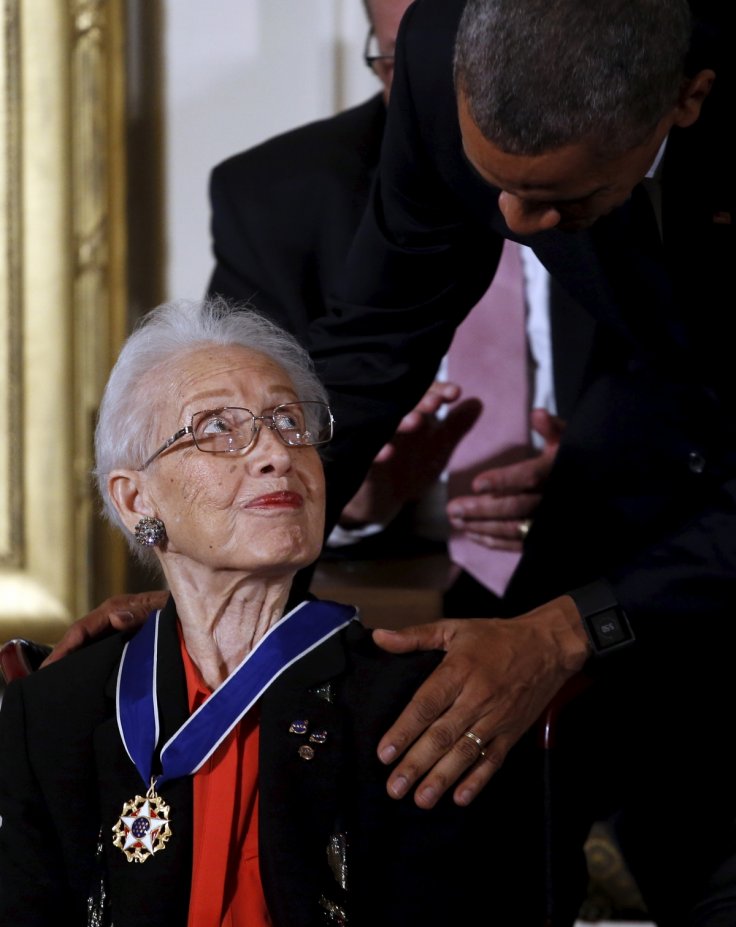
Human computer Katherine Johnson who was NASA mathematician died at the age of 101 at a retirement home in Newport News, Virginia, on February 24. Johnson is the person whose calculations helped first team of Americans go to space and return safely.
She contributed at NASA for over 33 years but her work was not recognized for decades of NASA's accomplishments in terms of space missions. Johnson the anonymous 'female computer' was doing a a thankless job that was vital for NASA. Now, duly recognized Johnson is considered one of the pioneers of the space age.
Though she joined NASA in early 1950s she was not recognized until 2015. She became a nationwide celebrity in 2015 when then President Barack Obama presented her with the Presidential Medal of Freedom for her pioneering work in the fields of science, technology, engineering, and mathematics (STEM). This is the highest honor a civilian can receive in the US.
Katherine Johnson who was born as Katherine Coleman on August 26, 1918 in White Sulphur Springs, West Virginia was the daughter of Joylette and Joshua Coleman. Joylette was a teacher and father Joshua worked as lumberman, farmer, and handyman at the Greenbrier Hotel.
The movie Hidden Figures is based on Katherine Johnson's life and work at NASA. Here are some interesting facts about the human computer Katherine Johnson:
Super brain
Johnson proved her mettle much before joining NASA as she was able to complete the graduation course when she was just 18. It is said that she had enrolled directly into the second grade in school and joined high school at the age of 10.
When she was pursuing under graduation course at West Virginia State College, she is known to have opted for every math class. Dr William W Schiefflin Claytor, one the famous black mathematician was her mentor who designed a special course on the geometry of space, especially for Johnson. She graduated with mathematics and French degrees when she was just 18.
First black woman student to enter West Virginia's graduate school
Johnson wanted to continue education after marriage. The newly married Johnson joined West Virginia University in 1939. She was one of the first three black students to enroll into the integrated graduate school program. She was the first black woman student to pursue the course. However, she dropped out of college after the first semester as she was pregnant.
Rejected by NASA
Katherine Johnson applied for NASA (then known as the National Advisory Committee for Aeronautics, or NACA) in mid 1950s. NASA was looking for people who could crunch numbers for a project to send people to space for the first time. Agency hired a number of women to perform the function of computer with complex math for low wages. Johnson failed to get the job first time she applied. Ambitious Johnson applied the second year too and her application was accepted the second time.
Why the name human computer?
Katherine Johnson got the name human computer because she played a vital role in not only sending American astronauts to space but also in their safe return. Johnson completed the trajectory analysis for Alan Shepard's 1961 suborbital flight. This was the first time the US had sent a human into space.
Johnson's calculations gave an upper hand to the US in the fight between US and Russia (then USSR) marking a major moment in the space race with astronaut John Glenn's three orbits around Earth in 1962. Johnson had played an important role in getting the astronaut off the ground. She was so credible that Glenn had requested her to check the computer calculations by redoing it by hand had said, "If she says they're good, then I'm ready to go."
Her calculations also led to the successful landing of Apollo mission on moon, which turned out to be one of the major events in the history of space travel.
Book on space travel, doctorate
Johnson co-authored one of the first textbooks on space. She was then with Flight Dynamics Branch at the Langley Research Center of NASA. She has co-authored 26 scientific papers. Her autobiography is known as Reaching For the Moon.
Johnson was honored with a doctorate by West Virginia University after 75 years of her dropping out of the school. The doctorate was awarded for "attaining national and international preeminence in the field of astrophysics and providing distinguished leadership and service in her field," said the statement from West Virginia University.


